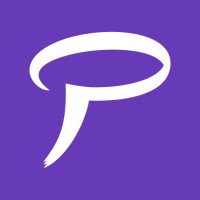Slack is a workplace communication app meant to help people find the information they need. It allows unlimited free users to communicate via individual/group direct messages and dedicated private/public channels. Additional features include file sharing, emoji reactions, search options, and status updates, among others.
Because of the benefits it offers, Slack attracts a lot of users. Back in October 2019, this app had about 12 million daily active users. Today, this number is probably higher during the sudden shift to remote work due to the pandemic.
But, despite its popularity, Slack has its downsides — especially in its free plan.
The first downside is its limited access to team chat history.
Namely, Slack’s free version allows access to only 10,000 most recent messages. After your team reaches this limit, previous messages no longer appear when you search through Slack conversations. This means that a team of 50, who exchange 20 messages per day, will hit the 10,000 limits within 10 days.
The second downside is the lack of a self-hosted option.
Slack does not provide the option to host your workspace on your own servers. This means you may need to re-consider security, compliance, and the data regulations attached to your conversations.
Another downside is limited file-sharing.
The free edition provides 5 GB of file storage space for the whole team. It means that a team of 100, who exchange 5 MB worth of files per day, will reach the limit in 10 days.
In the end, Slack’s main downside may be the price for the paid plans. Namely, the pricing starts at $6.67 per user per month.
To lift limitations and enjoy additional features, a team of 100 people will need to pay a little more than $8,000 per year just for their team communication app.
To enjoy Slack-like functionalities but avoid its limitations, teams are often searching for appropriate Slack alternatives.
4 Best Slack Alternatives, Competitors and Similar Apps in 2022:
1. Pumble

When it comes to the best Slack alternative, our pick is Pumble.
Pumble offers the same features you can find in Slack, only for free. But, it also lifts Slack’s notorious limitations — and offers some additional functionalities.
For one, you’ll have free access to your entire chat history at any time. This makes Pumble a suitable solution for documenting data. You’ll always have access to all vital information you’ve shared or received in direct and channel conversations.
The free edition of Pumble also offers an increase in the size of free file storage available. Namely, while Slack provides 5 GB of free file storage for the whole team, Pumble provides 10 GB.
Pumble’s price for the basics every team needs — or the lack of said price — maybe its key “selling” point. You can add an unlimited number of users to your free workspaces and enjoy unlimited basic functionalities. This means that a team of 100 employees looking to use the basic features can save $8,000 per year on their internal team communication processes.
Moreover, unlike Slack, Pumble offers a self-hosted version. You can choose a paid self-hosted version of the app and enjoy maximum security and privacy by hosting Pumble on your own servers. Also, the self-hosted version offers quick and simple maintenance, 24h phone and priority email support, and an unlimited number of workspaces, among other perks.
In gist, Pumble is most similar to Slack. In terms of interface and workflows, you’ll barely notice the difference if you switch. Moreover, Pumble also offers more of the same features and functionalities for free and an additional paid option to maximize privacy and security.
2. Google Chat

Google Chat is another great alternative to Slack. It was originally planned to be a Slack competitor for G Suite but is now mostly known as Google’s chat replacement for Google Hangouts.
This team chat app nicely covers the essentials for synchronous but also asynchronous online communication. You get to partake in group conversations in private and public chat rooms, share files, send direct messages, add emoji reactions to discussions, and receive tailored notifications.
The number of users you can add is 8,000 members per room — the system also supports 28 languages and external users.
However, we do place it second to Pumble for a reason. For one, while Pumble is just as easy to sign up for as Slack — you just need to make a couple of clicks to create a workspace and start communicating and collaboration with fellow teammates — Google Chat has a more complex sign-up approach. Namely, you need to use it via your own Google Workspace, for which you need a Workspace-associated domain name.
Plus, Google Chat lacks the robustness Pumble shares with Slack regarding conversation threads and chat history search options. You can also attach only up to 200 MB of files from your mobile device, computer, or Google Drive. However, this team chat app represents a nice solution for smaller remote or hybrid teams — and you can access it directly from your Gmail.
When it comes to pricing, Google Chat is free to use for people who are already Google Workspace users. The pricing for Google Workspace starts with the Business Starter plan, which is $6 per month per user, making it a slightly cheaper alternative to Slack. To compare, a team of 100 employees can save $800 by using Google Chat as a replacement.
3. Microsoft Teams

According to rumors from 2016., Microsoft Teams could have been Slack, at least, in a way. Namely, sources indicate that Microsoft was planning to acquire Slack for $8 billion. But, these plans fell through as Microsoft opted to simply expand their Skype for Business model — which eventually became Microsoft Teams.
Microsoft Teams offers online communication functionalities — albeit it is more geared towards enterprise businesses than smaller teams. You’ll get to partake in conversations via channels and teams, have brief discussions via the basic chat function, share files, but also store them in SharePoint Online. Compared to Slack, it offers free unlimited access to the team’s messaging history and 10 GB of shared storage within its Freemium plan, just like Pumble.
However, Slack and Pumble are still much easier to set up and administrate. Namely, to sign up for Teams, you will need to undergo a more complex registration process. Moreover, you’ll also need to endure a steep learning curve before you can use the app to its full potential.
Just like Google Chat, Microsoft Teams also benefits by being a part of a popular package of work tools. In line with that, it offers great integrations with other Office 365 apps.
This interdependence also marks another similarity Microsoft Teams shares with Google Chat — you’ll need to pay for Office 365 to get Teams as an add-on. The pricing for Office 365 plans starts at $5 per use, per month, within the Business Essentials Plan. This means that a team of 100 employees can save $2,000 per year, compared to teams who use Slack.
4. Discord

In essence, Discord is a communication platform most people associate with gaming communities. However, Discord can also be used for business because of its rich functionalities, which business teams can hone to their advantage.
While Slack focuses on written communication (alongside Pumble, Google Chat, and Microsoft Teams), Discord focuses on voice chat. After all, gamers playing in teams need lag-free voice chat to collaborate.
However, Discord also offers an advanced channel setting that lets business teams hold private discussions with distinct roles and permissions for each channel member.
The number of teammates you can add is, once again, almost unlimited. If needed, you can add up to 500,000 server members.
Compared to Slack, Discord is another app that wins at the messaging history game — its free plan grants you access to unlimited chat history.
However, unlike the other entries on this list, Discord lacks threads. You cannot follow up on a specific point in a conversation, which is likely to make your discussions less structured and scannable.
Moreover, the file-sharing feature is lacking. The upload limit per file is 8 MB in the Free plan and 50 MB in the Nitro Plan. These features mark Discord as a suitable solution for smaller teams who need less structure and document sharing to communicate and collaborate.
To overcome the limitations of the Free plan and enjoy more functionalities, you can turn to a Discord paid plan. The pricing starts at $4.99 per month, which means a team of 100 employees will need to cash out a little less than $6,000 for this Slack replacement per year.
See Also:
Conclusion
Slack currently reigns as one of the most popular team chat apps for business communication.
However, the limitations of its free plan — such as the expensive price for larger teams and the possibility to access only the most recent 10,000 messages — inspire teams to look for suitable Slack alternatives.
Google Chat, Microsoft Teams, and Discord emerge as worthy replacements for various types of teams. For a start, teams can save up to a couple of thousands of dollars per year by opting for these Slack replacements.
But, Pumble stands out as the best solution for both enterprise businesses looking to host their conversations on their servers and smaller teams looking for an easy way to communicate daily.
Pumble’s more generous free plan proves a suitable alternative to Slack’s limited features. Teams with hundreds of employees will get to enjoy a larger file storage limit and unlimited chat history, all for free.
Marija Kojic is a researcher and writer, specialized in team communication and collaboration. She enjoys helping people discover meaningful and effective ways to communicate and collaborate smarter. She has also appeared in G2 Crowd Learning Hub, The Good Men Project, and Pick the Brain.






















Reed Griffin
November 19, 2022 at 3:39 pm
I like the efforts you have put in this, regards for all the great content.